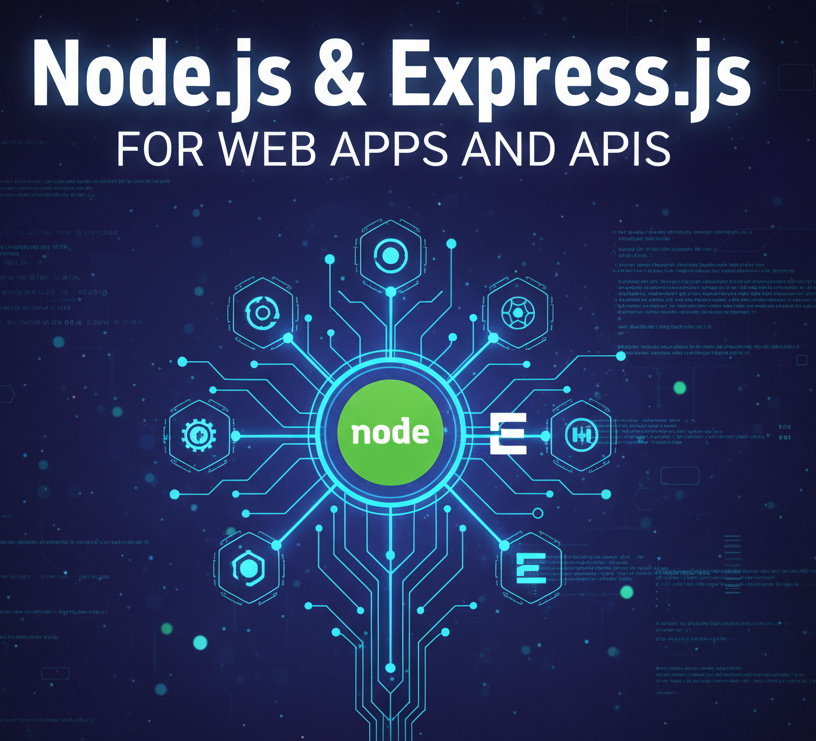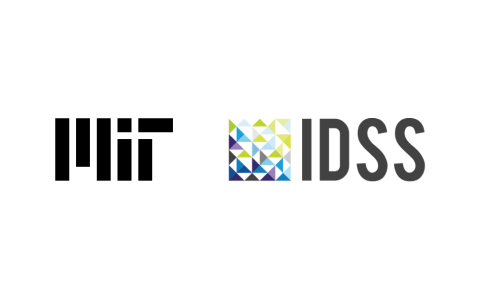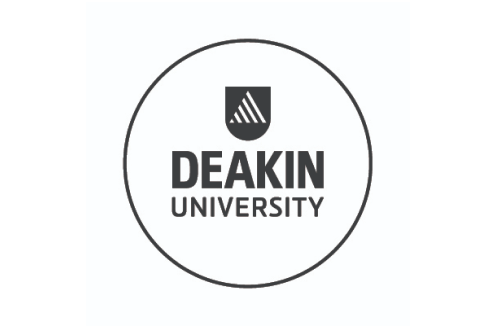- Great Learning
- Free Courses
- Data Science
Earn a certificate & get recognized
R for Data Science
Enroll in this free online course to gain a strong foundation in data visualization and manipulation using R. Channelize your career in Data Science with essential skills and techniques.
Instructor:
Mr. Bharani AkellaR for Data Science
14.5K+ learners enrolled so far
Stand out with an industry-recognized certificate
10,000+ certificates claimed, get yours today!
Get noticed by top recruiters
Share on professional channels
Globally recognised
Land your dream job

Skills you will gain
Basics of R
Data structures in R
Data Manipulation in R
Data Visualisation in R
Key Highlights
Get free course content
Master in-demand skills & tools
Test your skills with quizzes
About this course
This course will introduce you to R programming for Data Science, with a few demonstrated examples. The course shall focus you on the elements and features available in R to work on Data Science tasks. It shall begin with a briefing on the basics of R programming and then help you understand the data structures, in-built functions, user-defined functions, and flow control statements as you follow the first half of the course. The second part engages you by covering data manipulation and data visualization with factors and dataframes in R. The course also comprehends installing R. Take up the assessment at the end of the course to test your skills and evaluate your gains to avail the certificate.
After this free, self-paced, beginner's guide to R for Data Science, you can enroll in the Data Science course and embark on your career with the professional Post Graduate certificate and learn various concepts in depth with millions of aspirants across the globe!
Course outline
Installing R
This module gives you a demo of installing R-Studion on your system.
Basics of R
This section shall cover the basic concepts in R, starting from understanding what a variable is and explaining different types of data. You will then know about the different sections, tabs, and elements in R studio. You will also understand how to work with different types of variables later in this section.
Data Structures in R
Vectors, lists, data frames, matrices, arrays, and factors are the different data structures present in R. You will understand all of these data structures with demonstrated snippets of code in this section.
In-built functions in R
R language have a rich set of built-in functions already created and defined in the programming framework. You will understand and work with a few in-built functions with demonstrated examples in this section.
Flow Control Statements in R
The section begins with defining what flow control statements are and then continues with its expression with a demonstrated snippet of code for each control statement. You will also understand how these statements control the execution and flow of codes depending on the conditions defined.
User defined Functions in R
You will first understand what user-defined functions are and how users create them based on the requirements. You will also learn to define them through the code in this section.
Factor and Dataframe in R
This module begins with explaining what a factor is and will help you understand it through an example. The second part of this section talks about what dataframes are and why they are essential. You will then work with sample codes to understand dataframes better.
Data Manipulation in R
The section begins by defining what data manipulation is with an example. You will then understand the role of the DPLYR package in data manipulation and work with its methods, functions, and operators to alter and fetch data in order to organize data and make it more readable in R in the second part of this section.
Data Visualization in R
You will understand what data visualization is at the beginning of this section and then continue to understand it through ggplot2. You will also learn to stack and represent layers using histogram, bar graph, scatter point, and box plot through ggplot2 and also look at the demonstrated code snippet to understand data visualization better.
Get access to the complete curriculum once you enroll in the course
Stand out with an industry-recognized certificate
10,000+ certificates claimed, get yours today!
Get noticed by top recruiters
Share on professional channels
Globally recognised
Land your dream job

R for Data Science

3.0 Hours
Beginner
14.5K+ learners enrolled so far
Get free course content
Master in-demand skills & tools
Test your skills with quizzes
Refer and earn
Get learning discounts up to $20
Learner reviews of the Free Courses

5.0
5.0

5.0

5.0

5.0

5.0

5.0

5.0
What our learners enjoyed the most
Skill & tools
65% of learners found all the desired skills & tools
Our course instructor

Mr. Bharani Akella
Data Scientist
Data Science Expert
Frequently Asked Questions
Will I receive a certificate upon completing this free course?
Is this course free?
What are the prerequisites required to learn the R for Data Science course?
R for Data Science is a beginner's course, and you can begin the course with good knowledge of computer science. But if you want to do a little homework to boost your learning, we suggest you learn the basics of R programming and Data Science before starting this course.
Will I have lifetime access to this free course?
Yes, once you enroll in the course, you will have lifetime access to this Great Learning Academy's free course. You can log in and learn whenever you want to.
What are my next learning options after this R Programming for Data Science course?
Once you complete this free course, you can opt for a Master's in Data Science that will help advance your career growth in this leading field.
Is it worth learning R for Data Science?
Yes, it is beneficial to learn R for Data Science. Data Science being one of the leading technologies in the world today, the market for Data Science professionals only grows every day. If you are thorough with R programming, then it serves as a one-stop to carry out data visualization and data manipulation in tasks Data Science efficiently.
What is R programming in Data Science used for?
R programming language has libraries and packages that make it straightforward and easier for programmers to work on data manipulation and data visualization tasks. Also, elements like factors and dataframes structure data representation and make it understandable to the user.
Why is R for Data Science so popular?
R is a statistical programming language that can be used to work with data visualization and data manipulation tasks. These are the essential functions carried out by any data science professional to understand data, and R provides inbuilt libraries and packages to carry out these functions in a more efficient way hence making it a popular tool for Data Science purposes.
Will I get a certificate after completing this free R for Data Science course?
Yes, you will get a certificate of completion for the R for Data Science course after completing all the modules and cracking the quiz/assessment. The assessment tests your knowledge of the subject and badges your skills.
What knowledge and skills will I gain upon completing this course?
You will gain the foundational knowledge of how to use R Programming for Data Science tasks through this course. You will get familiar with data structures, flow control statements, functions, factors, dataframes, data visualization, and data manipulation concepts using R programming upon completion.
How much does this R for Data Science course cost?
It is an entirely free course from Great Learning Academy. Anyone interested to learn R Programming for Data Science and understanding the basics can get started with this course.
Is there any limit on how many times I can take this free course?
Once you enroll in the R for Data Science course, you have lifetime access to it. So, you can log in anytime and learn it for free online.
Can I sign up for multiple courses from Great Learning Academy at the same time?
Yes, you can enroll in as many courses as you want from Great Learning Academy. There is no limit to the number of courses you can enroll in at once, but since the courses offered by Great Learning Academy are free, we suggest you learn one by one to get the best out of the subject.
Why choose Great Learning Academy for this free R for Data Science course?
Great Learning is a global educational technology platform committed to developing skilled professionals. Great Learning Academy is a Great Learning project that provides free online courses to assist people in succeeding in their careers. Great Learning Academy's free online courses with certificates have helped over 4 million students from 140 countries. It's a one-stop destination for all of a student's needs.
This course is not only free and self-paced, but it also includes solved problems, demonstrated codes, and presented examples to help you comprehend the numerous areas that fall under the subject. The course is conducted by topic experts and is carefully tailored to cater to both beginners and professionals.
Who is eligible to take this course?
Anybody with basic knowledge of computer science, Data Science, and with a good hold on R Programming, interested in learning Data Science with R and understanding its basics can take up the course. So, enroll in our R programming course today and learn it for free online.
What are the steps to enroll in this R for Data Science course?
Enrolling in Great Learning Academy’s R for Data Science is a simple and straightforward approach. You will have to sign-up with your E-Mail ID, enter your user details, and then, you can start learning at your own pace.
Become a Skilled Professional with Pro Courses
Gain work-ready skills with guided projects, top faculty and AI tools, all at an affordable price.


View Course

Included with Pro+ Subscription

View Course

Included with Pro+ Subscription
.jpg)
View Course

Included with Pro+ Subscription


View Course

Included with Pro+ Subscription


View Course

Included with Pro+ Subscription

View Course

Included with Pro+ Subscription

View Course

Included with Pro+ Subscription

View Course

Included with Pro+ Subscription




View Course

Included with Pro+ Subscription

View Course

Included with Pro+ Subscription

View Course

Included with Pro+ Subscription
.jpg)
View Course

Included with Pro+ Subscription

View Course

Included with Pro+ Subscription

View Course

Included with Pro+ Subscription


View Course

Included with Pro+ Subscription


View Course

Included with Pro+ Subscription


View Course

Included with Pro+ Subscription


View Course

Included with Pro+ Subscription


View Course

Included with Pro+ Subscription




View Course

Included with Pro+ Subscription

View Course

Included with Pro+ Subscription

View Course

Included with Pro+ Subscription

View Course

Included with Pro+ Subscription

View Course

Included with Pro+ Subscription
.png)
View Course

Included with Pro+ Subscription
.jpg)
View Course

Included with Pro+ Subscription

View Course

Included with Pro+ Subscription

View Course

Included with Pro+ Subscription

View Course

Included with Pro+ Subscription
.png)
View Course

Included with Pro+ Subscription

View Course

Included with Pro+ Subscription

View Course

Included with Pro+ Subscription

View Course

Included with Pro+ Subscription


View Course

Included with Pro+ Subscription

View Course

Included with Pro+ Subscription

View Course

Included with Pro+ Subscription
.png)
View Course

Included with Pro+ Subscription
.jpg)
View Course

Included with Pro+ Subscription
.jpeg)
View Course

Included with Pro+ Subscription
.jpg)
View Course

Included with Pro+ Subscription
.jpg)
View Course

Included with Pro+ Subscription

View Course

Included with Pro+ Subscription

View Course

Included with Pro+ Subscription


View Course

Included with Pro+ Subscription


View Course

Included with Pro+ Subscription


View Course

Included with Pro+ Subscription
.png)
View Course

Included with Pro+ Subscription



.png)


View Course

Included with Pro+ Subscription


View Course

Included with Pro+ Subscription

View Course

Included with Pro+ Subscription

View Course

Included with Pro+ Subscription
.png)
View Course

Included with Pro+ Subscription
.png)
View Course

Included with Pro+ Subscription
.png)
View Course

Included with Pro+ Subscription
Popular


View Course

Included with Pro+ Subscription

View Course

Included with Pro+ Subscription
.jpg)
View Course

Included with Pro+ Subscription


View Course

Included with Pro+ Subscription


View Course

Included with Pro+ Subscription

View Course

Included with Pro+ Subscription

View Course

Included with Pro+ Subscription

View Course

Included with Pro+ Subscription
AI & Generative AI




View Course

Included with Pro+ Subscription

View Course

Included with Pro+ Subscription

View Course

Included with Pro+ Subscription
.jpg)
View Course

Included with Pro+ Subscription

View Course

Included with Pro+ Subscription

View Course

Included with Pro+ Subscription
Microsoft Courses


View Course

Included with Pro+ Subscription


View Course

Included with Pro+ Subscription


View Course

Included with Pro+ Subscription


View Course

Included with Pro+ Subscription


View Course

Included with Pro+ Subscription


Data Science & ML


View Course

Included with Pro+ Subscription

View Course

Included with Pro+ Subscription

View Course

Included with Pro+ Subscription

View Course

Included with Pro+ Subscription

View Course

Included with Pro+ Subscription
.png)
View Course

Included with Pro+ Subscription
IT & Software
.jpg)
View Course

Included with Pro+ Subscription

View Course

Included with Pro+ Subscription

View Course

Included with Pro+ Subscription

View Course

Included with Pro+ Subscription
.png)
View Course

Included with Pro+ Subscription

View Course

Included with Pro+ Subscription

View Course

Included with Pro+ Subscription

View Course

Included with Pro+ Subscription


View Course

Included with Pro+ Subscription
 (1).png)
View Course

Included with Pro+ Subscription


View Course

Included with Pro+ Subscription

View Course

Included with Pro+ Subscription


View Course

Included with Pro+ Subscription

View Course

Included with Pro+ Subscription

View Course

Included with Pro+ Subscription
.png)
View Course

Included with Pro+ Subscription
.png)
View Course

Included with Pro+ Subscription

View Course

Included with Pro+ Subscription

View Course

Included with Pro+ Subscription

View Course

Included with Pro+ Subscription

View Course

Included with Pro+ Subscription

View Course

Included with Pro+ Subscription
Management

View Course

Included with Pro+ Subscription

View Course

Included with Pro+ Subscription
.png)
View Course

Included with Pro+ Subscription
.jpg)
View Course

Included with Pro+ Subscription
.jpeg)
View Course

Included with Pro+ Subscription
.jpg)
View Course

Included with Pro+ Subscription
.jpg)
View Course

Included with Pro+ Subscription

View Course

Included with Pro+ Subscription

View Course

Included with Pro+ Subscription
.png)
View Course

Included with Pro+ Subscription
.png)
View Course

Included with Pro+ Subscription
.png)
View Course

Included with Pro+ Subscription
.png)
View Course

Included with Pro+ Subscription
.png)
View Course

Included with Pro+ Subscription
 (1).jpg)
View Course

Included with Pro+ Subscription

View Course

Included with Pro+ Subscription
Cloud Computing


View Course

Included with Pro+ Subscription


View Course

Included with Pro+ Subscription


View Course

Included with Pro+ Subscription
.png)
View Course

Included with Pro+ Subscription



.png)


View Course

Included with Pro+ Subscription


View Course

Included with Pro+ Subscription
.png)

View Course

Included with Pro+ Subscription
.jpg)

.jpg)

.png)

View Course

Included with Pro+ Subscription


Cyber Security

View Course

Included with Pro+ Subscription

View Course

Included with Pro+ Subscription
.png)
View Course

Included with Pro+ Subscription
.png)
View Course

Included with Pro+ Subscription
.png)
View Course

Included with Pro+ Subscription
Subscribe to Academy Pro+ & get exclusive features
$25/month
No credit card required

Learn from 40+ Pro courses

Access 500+ certificates for free

700+ Practice exercises & guided projects

Prep with AI mock interviews & resume builder
Recommended Free Data Science courses




Similar courses you might like




Related Data Science Courses
-
Personalized Recommendations
Placement assistance
Personalized mentorship
Detailed curriculum
Learn from world-class faculties
50% Average salary hike -


12 weeks · Online
Know More
-


MIT Professional Education
Applied AI and Data Science Program14 Weeks · Live Online · Weekdays & Weekend
Know More
-


Deakin University
Master of Data Science (Global) Program24 Months · Online
Top 1% UniversityKnow More













